 Sorry about not being able to post yesterday, but it was a crazy busy day because I was one of the co-chairs for Fox West Philanthropic Network’s first ever Philanthropy Day celebration. There was lots to do and I was up early and running around.
Sorry about not being able to post yesterday, but it was a crazy busy day because I was one of the co-chairs for Fox West Philanthropic Network’s first ever Philanthropy Day celebration. There was lots to do and I was up early and running around.
Huh? What? You’re not sure what Philanthropy Day is all about? Well, let me tell you . . .
History of Philanthropy Day
In 1986, President Ronald Reagan proclaimed November 15th to be National Philanthropy Day. The Association of Fundraising Professionals (AFP) has championed this annual celebration and countless local AFP chapters do a variety of things to celebrate this holiday. Here is how AFP describes National Philanthropy Day on their website:
In 2013, more than 100 communities and 50,000 people around the world will participate in NPD events and celebrations. These events include award ceremonies, galas, luncheons, seminars and other special events. Outstanding donors, volunteers, corporations, foundations, small businesses, youth in philanthropy and others will be honored on NPD in recognition of their work in improving their communities and their world every day.
If you want a more comprehensive history of National Philathropy Day, you definitely want to check out a 2010 online video interview of Lynn Schrader, who is a CFRE and owner of The Schrader Group LLC. The interview was produced by our friends at 501Videos.com and creators of Monday Movies for Fundraising Professionals.
It really is a great little five-minute video that I hope you find time to watch.
 Positioning Your Board for More Effective Fundraising
Positioning Your Board for More Effective Fundraising
Dani Robbins, who is the strategist, founder and principal of Non Profit Evolution in Columbus, Ohio and the non-profit expert at answers.com, was the trainer and lunch keynote speaker for Fox West Philanthropic Network’s (FWPN) first ever Philanthropy Day celebration.
The morning training was titled “Positioning Your Board for More Effective Fundraising“.
Dani’s teachable point of view can best be summed up as:
- It all starts with your board
- Board volunteers are some of your best donors
- How you identify and recruit board members is the key to your success
The following are steps that every good board development process should include:
- Identify
- Cultivate
- Recruit
- Orient
- Involve
- Educate
- Evaluate
- Rotate
Later in her presentation, Dani talked about the importance of engagement. She shared the following nine volunteer engagement principles:
- Mission Focus
- Planning
- Setting Expectations
- Training & Education
- Organization
- Well run & important meetings
- Accountability
- Urgency
- Celebration & recognition
 Lunch: Celebrating 100 years of philanthropy
Lunch: Celebrating 100 years of philanthropy
FWPN honored the Biggins family and American City Bureau for their work in the non-profit sector over the last 100 years. In addition to their work, John and his sister Leslie have volunteered for countless charities, and John was and still is instrumental in the success of FWPN.
Just this last summer Michael Chatman, social media and radio host of #WHYiGIVE, released a list of “America’s Top 40 Most Effective Fundraising Consultants” and ranked Leslie Biggins-Mollsen as number three on that list.
Philanthropy in America has been and is being shaped by the Biggins Family. There can be no question about it.
If you want to read more about John and Leslie’s father — James Biggins — then click here and read about a man who wove philanthropy into his family’s DNA and built our country’s oldest fundraising consulting firm.
Keynote: Not Fundraising? Not Engaged!
Dani Robbins, who is also the co-author of Innovative Leadership Workbook for Nonprofit Executives, delivered FWPN’s lunch keynote titled “Not Fundraising? Not Engaged!”
Dani’s teachable point of view can best be summed up as:
- If your board isn’t fundraising, then you likely have a board development or engagement problem
- Non-profits spend too much time in board meetings talking about finances, fundraising, and day-to-day challenges
- If you want a more engaged board, then facilitate more strategic and generative discussions in the boardroom
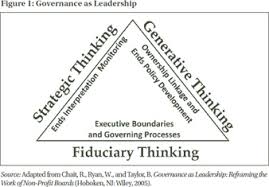 Dani is a big fan of Richard Chait and talked a lot about his three modes of governance — fiduciary, strategic and generative. She shared examples of each style of governance. She also shared the following eight techniques that can be used to get a board into the generative mode:
Dani is a big fan of Richard Chait and talked a lot about his three modes of governance — fiduciary, strategic and generative. She shared examples of each style of governance. She also shared the following eight techniques that can be used to get a board into the generative mode:
- Silent starts
- One minute memos
- Future perfect history
- Counter points
- Role play
- Breakouts
- Simulations
- Surveys
Click here to learn a little more about these techniques or invest a few bucks on Amazon.com and buy one of Chait’s books. 😉
Not speed dating . . . speed training
After lunch, the following five trainers facilitated short roundtable discussions and participants were allowed to rotate between table topics every 20-minutes:
- Social media — Katie Price of Design Big Dreams
- Capital Campaigns & Major Gifts — John Biggins of American City Bureau
- Foundations — Ralph Voris of The Ralph D. Voris Advisory Fund (as part of the Community Foundation of the Fox River Valley)
- Direct Mail — Kristen Eagen of Meyer Partners
- Annual Campaigns — Erik Anderson of The Healthy Non-Profit LLC
Your National Philanthropy Day celebration?
So, I’ve just highlighted how FWPN celebrated National Philanthropy Day in 2013. It was a mixture of:
- networking
- training / professional development
- recognition
However, you don’t need to do it that way.
There are countless ways for you to celebrate this special day. Click here to check out the AFP website which has lots of resources and ideas. Click here to visit the official National Philanthropy Day website.
Our country is one of the most philanthropic nations on the planet. How will your agency, service club, or professional development network celebrate this phenomenon this year? Or how are you planning to get your first ever Philanthropy Day celebration off the ground next year? Please use the comment box below to share your thoughts, experiences, plans and ideas. We can inspire each other to greatness!
Here’s to your health! (And Happy Philanthropy Day)
Erik Anderson
Founder & President, The Healthy Non-Profit LLC
www.thehealthynonprofit.com
erik@thehealthynonprofit.com
http://twitter.com/#!/eanderson847
http://www.facebook.com/eanderson847
http://www.linkedin.com/in/erikanderson847

 Don’t look now, but we are seven weeks away from drinking champagne and celebrating the end of 2013 and the start of a Happy New Year 2014. It is this time of the year when non-profit organizations are super busy. Many of you are closing out your fiscal year, and almost every non-profit with a pulse is executing its year-end giving strategy.
Don’t look now, but we are seven weeks away from drinking champagne and celebrating the end of 2013 and the start of a Happy New Year 2014. It is this time of the year when non-profit organizations are super busy. Many of you are closing out your fiscal year, and almost every non-profit with a pulse is executing its year-end giving strategy. I just finished helping a client with their year-end mail appeal. The executive director called on Friday to report the letters were delivered to the post office and we both did a little happy dance. The next thing on his year-end fundraising task list is preparing for the phone-a-thon follow-up the week of Thanksgiving.
I just finished helping a client with their year-end mail appeal. The executive director called on Friday to report the letters were delivered to the post office and we both did a little happy dance. The next thing on his year-end fundraising task list is preparing for the phone-a-thon follow-up the week of Thanksgiving.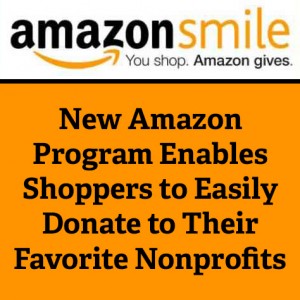 Holiday shopping appeals
Holiday shopping appeals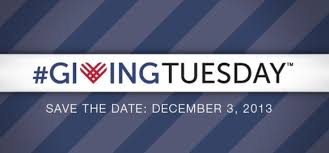 #GivingTuesday
#GivingTuesday Your non-profit brand is powerful. It is coveted by major corporations. It doesn’t matter if you are a major non-profit juggernaut like Boy Scouts or Girl Scouts or if you’re a teeny-tiny rowboat out there in the vast ocean of non-profit organizations. You are still valued. The mere fact that you are a non-profit organization, regardless of your mission, in and of itself is valued by corporate America.
Your non-profit brand is powerful. It is coveted by major corporations. It doesn’t matter if you are a major non-profit juggernaut like Boy Scouts or Girl Scouts or if you’re a teeny-tiny rowboat out there in the vast ocean of non-profit organizations. You are still valued. The mere fact that you are a non-profit organization, regardless of your mission, in and of itself is valued by corporate America.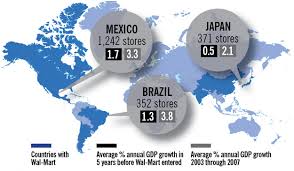 The following are all facts (OK, they are facts
The following are all facts (OK, they are facts  Have you heard of the “Halo Effect“?
Have you heard of the “Halo Effect“? You may be wondering what I mean by “abusing your non-profit brand“. Here is just a short list of neglectful things:
You may be wondering what I mean by “abusing your non-profit brand“. Here is just a short list of neglectful things: Boards meetings can quickly go from productive to destructive in any number of ways. The following are just a few lessons I’ve learned throughout the years and thought board volunteers might benefit from reading:
Boards meetings can quickly go from productive to destructive in any number of ways. The following are just a few lessons I’ve learned throughout the years and thought board volunteers might benefit from reading: When you don’t know where you’re going any road will get you there
When you don’t know where you’re going any road will get you there Time of Death: 2 hours after we started talking about this
Time of Death: 2 hours after we started talking about this
 I am a member of Gen-X, and I behave like a typical person of that generation especially when it comes to my mailbox. I hate going to the mailbox. I hate opening mail because 99.9% of it is junk. Anything important comes to me via email, and all of my bills and charitable giving is set-up using automatic bill pay. So, imagine my surprise the other day when I was opening a three-week stack of mail, and I came across a handwritten envelope from one of my favorite local charities.
I am a member of Gen-X, and I behave like a typical person of that generation especially when it comes to my mailbox. I hate going to the mailbox. I hate opening mail because 99.9% of it is junk. Anything important comes to me via email, and all of my bills and charitable giving is set-up using automatic bill pay. So, imagine my surprise the other day when I was opening a three-week stack of mail, and I came across a handwritten envelope from one of my favorite local charities. Every once in a while this job allows me to do something fun and amazing. Last week was one of those times. During an organizational assessment project, I had a brush with history when one of my interviewees turned out to be Nate “Bobo” Smalls. Who is this guy? Quite simply, Bobo is one of the last remaining baseball stars from the Negro Baseball League, which is a piece of history that the world tries very hard not to remember or honor. I walked away from my interview with Bobo with goosebumps on my arm.
Every once in a while this job allows me to do something fun and amazing. Last week was one of those times. During an organizational assessment project, I had a brush with history when one of my interviewees turned out to be Nate “Bobo” Smalls. Who is this guy? Quite simply, Bobo is one of the last remaining baseball stars from the Negro Baseball League, which is a piece of history that the world tries very hard not to remember or honor. I walked away from my interview with Bobo with goosebumps on my arm. Bobo recalled every neighborhood having at least one mentor.
Bobo recalled every neighborhood having at least one mentor. The epiphany
The epiphany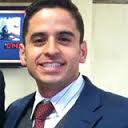 It happens every year. My partner and I get a phone call from Cindy, who is Ernie Gamino’s assistant, and she asks us to please schedule a year-end sit down meeting. Ernie is our Edward Jones financial advisor, and getting time in both of our calendars is a challenge. However, we found some time this past Saturday. I’m glad we did because I discovered that Ernie is a really good fundraising professional, who has never been trained as one or worked at a non-profit organization. We can all learn a lot from Ernie and his colleagues.
It happens every year. My partner and I get a phone call from Cindy, who is Ernie Gamino’s assistant, and she asks us to please schedule a year-end sit down meeting. Ernie is our Edward Jones financial advisor, and getting time in both of our calendars is a challenge. However, we found some time this past Saturday. I’m glad we did because I discovered that Ernie is a really good fundraising professional, who has never been trained as one or worked at a non-profit organization. We can all learn a lot from Ernie and his colleagues. I started the meeting off by growling at poor Ernie. I wanted to know why this annual meeting is necessary? Can’t he just go about doing his job and call me when he needs to get permission to do something with my investment portfolio.
I started the meeting off by growling at poor Ernie. I wanted to know why this annual meeting is necessary? Can’t he just go about doing his job and call me when he needs to get permission to do something with my investment portfolio.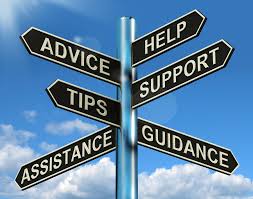 We talked about his Northern Illinois University (NIU) football team and the state of the BCS football system.
We talked about his Northern Illinois University (NIU) football team and the state of the BCS football system. For two days this week, I’ve been holed up in a little room interviewing donors, community leaders, and collaborative partners as part of an organizational assessment project. When you work in a small room for an extended period of time, you tend to notice every little thing. It was during this time that I found inspiration literally painted on the walls, which got me wondering where you and your non-profit organization gets its inspiration?
For two days this week, I’ve been holed up in a little room interviewing donors, community leaders, and collaborative partners as part of an organizational assessment project. When you work in a small room for an extended period of time, you tend to notice every little thing. It was during this time that I found inspiration literally painted on the walls, which got me wondering where you and your non-profit organization gets its inspiration?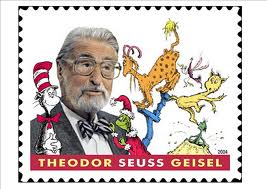
 I know that today’s post is a little different from the typical DonorDreams blog post, but working in that small room surrounded by those quotations got me wondering:
I know that today’s post is a little different from the typical DonorDreams blog post, but working in that small room surrounded by those quotations got me wondering: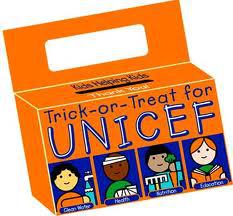 I just love this time of the year. The temperature outside is lovely. Trees are turning colors and putting on a show. Charity is coming into focus for millions of Americans. Last year approximately 174 million Americans donated approximately $50 billion to charities during the holiday season. While most resource development people will tell you this all starts with Thanksgiving, I contend that Halloween is when the starters gun goes off in my head.
I just love this time of the year. The temperature outside is lovely. Trees are turning colors and putting on a show. Charity is coming into focus for millions of Americans. Last year approximately 174 million Americans donated approximately $50 billion to charities during the holiday season. While most resource development people will tell you this all starts with Thanksgiving, I contend that Halloween is when the starters gun goes off in my head. It seems like I’ve been on the road a lot this month, and this allows me to interact with all sorts of talented and amazing non-profit professionals. In fact, just last night I was at dinner with another non-profit consultant who shared with me his “formula” for a successful board volunteer.
It seems like I’ve been on the road a lot this month, and this allows me to interact with all sorts of talented and amazing non-profit professionals. In fact, just last night I was at dinner with another non-profit consultant who shared with me his “formula” for a successful board volunteer.